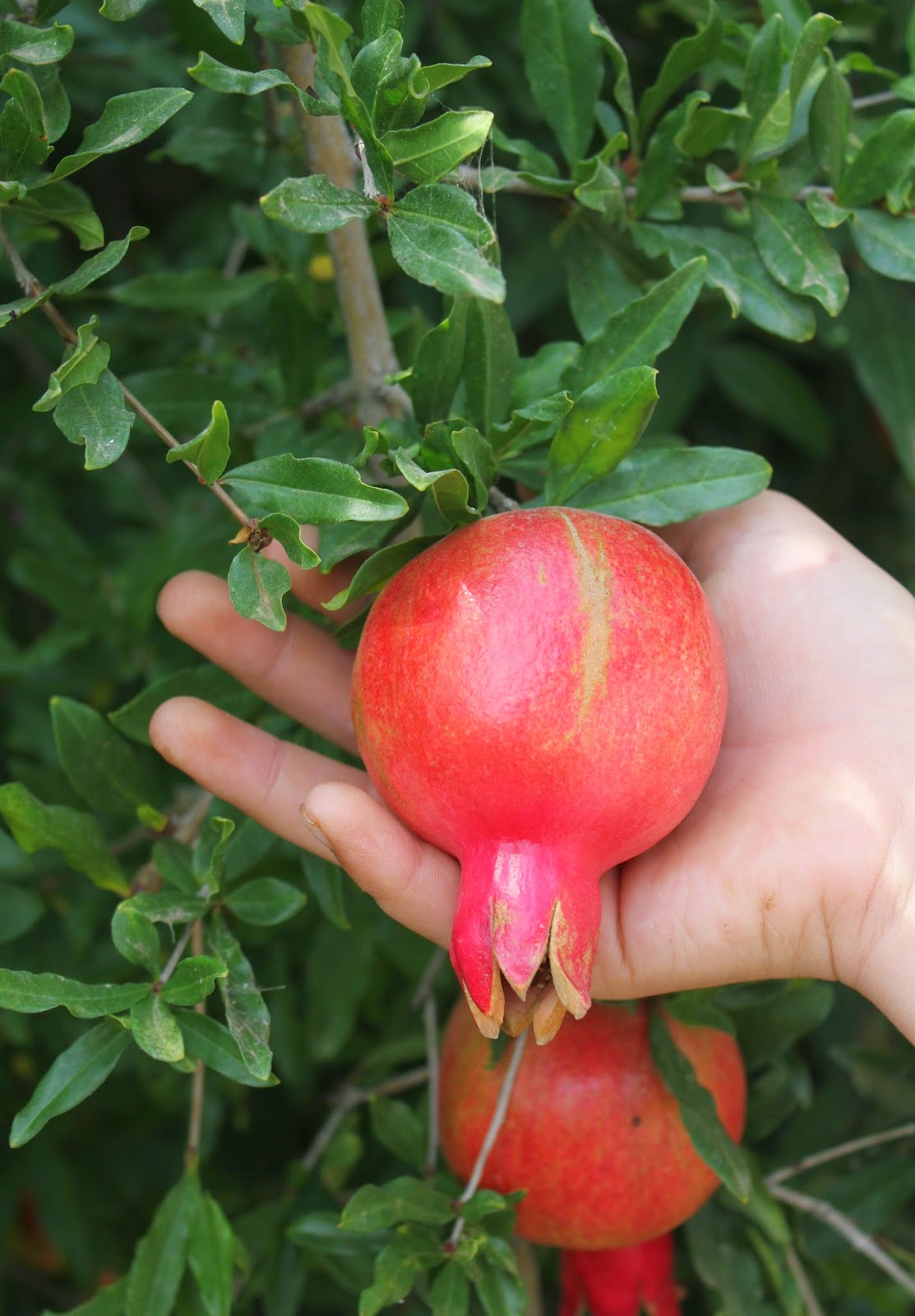Pomegranate Seeds
Growing up in California, pomegranate season has always been a sign that summer is ending and fall is beginning.
Now that I live near a farm in Yuba County, I have been able to watch pomegranates grow, ripen and come into season over the past few months. According to my local farmer, Lacie Robertston "they are ready now with the perfect balance of sweetness and tartness".
At the farm...
Pomegranate buds in early August
Pomegranate in late August
Pomegranate in September
It's late September and the pomegranates are ready now. Besides just cracking them open and eating the seeds, we loves them in salads, too.
Pear Salad with Blue Cheese, Walnuts and Pomegrantes
This beautiful fall salad by Georgeanne Brennan was inspired by a cheese plate. Having just returned from vacationing in Oregon where we sampled a lot of cheese plates...I couldn't wait to make this salad.
I made it today with just picked pomegranates and Barlett pears from local farms along with Point Reyes Farmstead Cheese Company's Original Blue. I highly recommend spending the extra money to buy a really good blue cheese like Point Reyes Farmstead Cheese. (Locally both Raley's and Nugget Market carry it.)
You can find the recipe in the Williams-Sonoma book Salad of the Day by Georgeanne Brennan or here at this link on the Williams-Sonoma website:
Pear Salad with Blue Cheese, Walnuts and Pomegranates
I can't wait to make it again and try it with hazelnuts next time for a little more Oregon flair!
(Farm photos taken at Robertston Family Farm in Yuba County, CA)
This beautiful fall salad by Georgeanne Brennan was inspired by a cheese plate. Having just returned from vacationing in Oregon where we sampled a lot of cheese plates...I couldn't wait to make this salad.
I made it today with just picked pomegranates and Barlett pears from local farms along with Point Reyes Farmstead Cheese Company's Original Blue. I highly recommend spending the extra money to buy a really good blue cheese like Point Reyes Farmstead Cheese. (Locally both Raley's and Nugget Market carry it.)
You can find the recipe in the Williams-Sonoma book Salad of the Day by Georgeanne Brennan or here at this link on the Williams-Sonoma website:
Pear Salad with Blue Cheese, Walnuts and Pomegranates
I can't wait to make it again and try it with hazelnuts next time for a little more Oregon flair!
(Farm photos taken at Robertston Family Farm in Yuba County, CA)

















